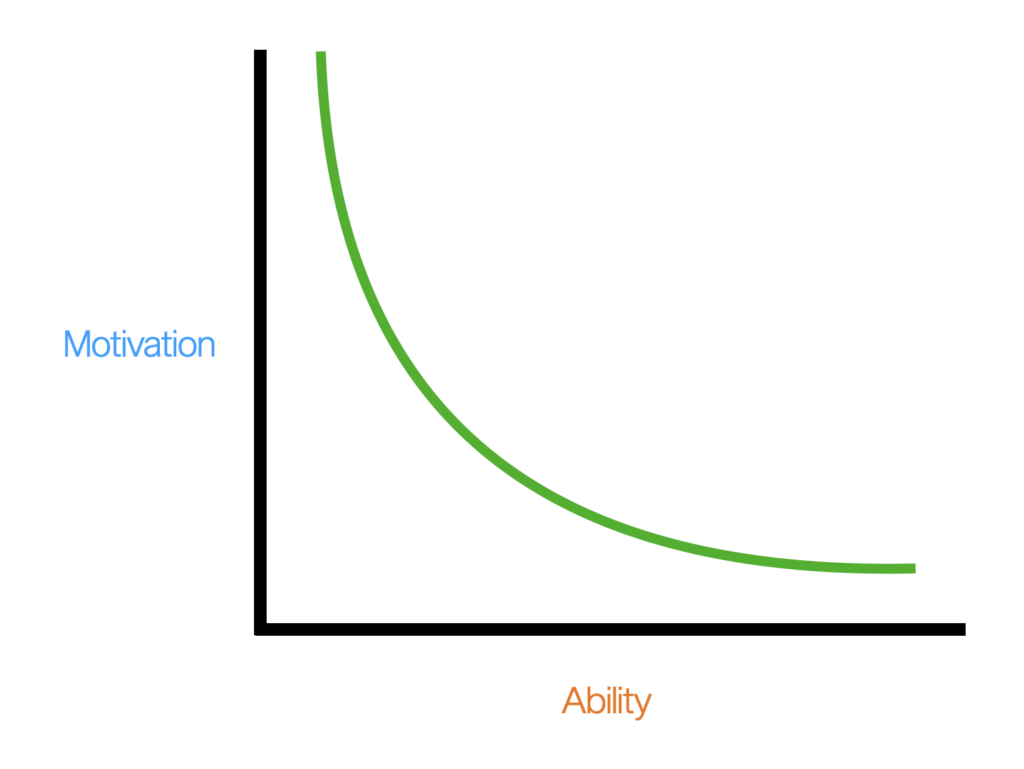Get my Fogg Behavior Model PDF Cheat Sheet
I’ve compiled the most important information from this overview in a Fogg Behavior Model PDF cheat sheet you can download when you subscribe to my newsletter.
What Is The Fogg Behavior Model?
The Fogg Behavior Model (FBM) is one of the best ways to understand and analyze human behavior.
Developed by BJ Fogg, the founder of the Stanford Behavior Design Lab (formerly known as the Stanford Persuasive Technology Lab), it is one of the most widely known and used models in the applied behavioral science world.
The Simple Model To Understand Human Behavior
The Fogg Behavior Model posits that behavior occurs when three principal elements come together in the same moment:
- Motivation
- Ability
- Trigger
Motivation
Is the person motivated to perform this behavior?
Ability
Is the person able to perform this behavior? Is the behavior simple?
Trigger
A cue or reminder.
The One Key Idea
If a person is motivated and able to do a behavior, they are likely to do so when prompted.
Simple, right?
That’s the beauty of the model. It focuses us on three principal elements. If a behavior isn’t occurring, it must be due to a deficiency in one of these areas.
Throughout my years as a Behavior Designer, I’ve found this simple checklist invaluable.
What Are BJ Fogg’s Six Factors?
These are called the Simplicity Factors.
They make up the Ability component of the Fogg Behavior Model. If a behavior is simple, it’s easy.
They are:
- Time
- Money
- Physical Effort
- Brain Cycles
- Social Deviance
- Non-Routine
If a behavior requires a lot of time, it’s not simple.
If a behavior requires a lot of money, it’s not simple.
If a behavior requires a lot of physical effort, it’s not simple.
If a behavior requires a lot of “brain cycles” (mental effort), it’s not simple.
If a behavior is socially deviant, it’s not simple.
If a behavior is non-routine (non-familiar), it’s not simple.
What Are The 3 Main Types Of Triggers In The Fogg Behavior Model?
According to BJ Fogg, there are three different types of triggers:
- Facilitator Triggers
- Spark Triggers
- Signal Triggers
Facilitator Triggers
These are triggers that make the desired behavior easier. In other words, they increase the ability of people to do the behavior.
Spark Triggers
These are triggers that increase motivation. They make people more motivated to do the behavior.
Signal Triggers
These are simple cues. Simple reminders. They don’t increase motivation or ability in any way.
What Are The Core Motivators?
According to the Fogg Behavior Model, there are three core motivators:
- Sensation
- Anticipation
- Belonging
Sensation
Pleasure and pain.
Anticipation
Hope and fear.
Belonging
Social acceptance and rejection.
All behaviors are driven by one or more of these three motivators.
A Simple Behavior Change Troubleshooting Process
The Fogg Behavior Model gives us a simple model for understanding human behavior.
When the three principal elements come together in a single moment, behavior occurs.
Thus, in order to get someone to perform a desired behavior, we merely need to ensure that all three elements are adequate.
- Is motivation high enough?
- Is ability high enough?
- Is the trigger clear and attention grabbing enough?
When attempting to change user behavior for a company, these elements give us a nice checklist we can use for our user and product research.
- Are our users motivated to do the target behavior? If not, how can we increase their desire to do the behavior?
- Is the behavior we’re asking them to do easy enough? (Remember, the word ability refers to the Simplicity Factors in Fogg’s model. Use the six Simplicity Factors as your guide.)
- Are our users being cued clearly and at the right time? Users need to be motivated and able to perform the behavior when cued.
I hope you can see how the Fogg Behavior Model makes behavior change/behavior design approachable. There is probably no better model to start with.
TL;DR
The FBM outlines Core Motivators, Simplicity Factors, and types of Triggers, and ties them together into an elegant toolkit for understanding and changing human behavior.
Related Articles On BJ Fogg’s Behavior Model And Other Behavior Change Approaches:
- Models To Know: Fogg Behavior Model
- Behavioral Strategy: An Overview
- What is a habit?
- “Hooked: How To Build Habit Forming Products” Is Wrong





